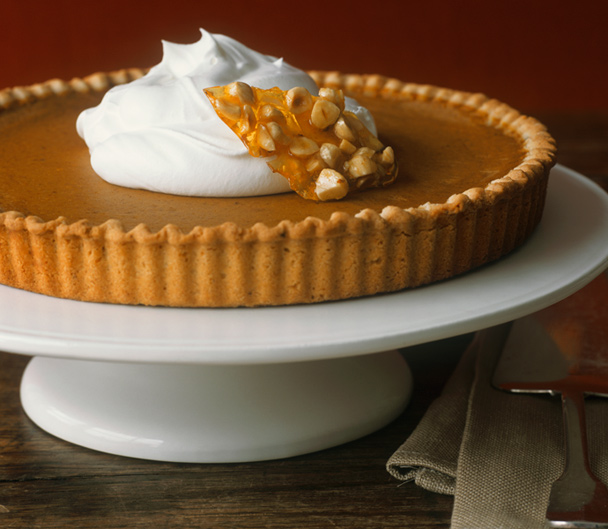They’ve swept the culinary world by storm, kicked cupcakes to the curb, and were officially proclaimed the dessert du jour among the year’s food trends. But despite their storied 450-year history and more recent return to fashionable heights, pies can be one of the most difficult desserts to master. From choosing the right crust to betting on blind-baking, your search for how to make the perfect pie ends here.
The Crust Conundrum
A flaky, golden-brown crust is the first sign of a pie made right. When it comes to selecting the base for your filling, you can choose between two types of dough: pâte brisée and pâte sucrée, or a crust made of crushed cookies.
Pâte brisée is the most common crust and is characterized by its neutral flavor and flaky texture. It’s made with large pieces of cold fat, which are generally the size of peas and left unmixed in the dough. As the fat melts, it creates pockets of steam, and the spaces left behind by those pockets create the flaky layers. But not all fats are created equal!
In America, pâte brisée piecrusts are made with lard, shortening, or a combination of the two, which results in a more defined crust shape. But in France, the fat of choice is butter, which produces a softer shape. Although lard and shortening lead to a flakier texture, butter is hands down the winner in flavor.
Not all fillings beg for a buttery crust, though. For sweeter and more delicate pie fillings, such as lemon meringue or pumpkin, opt for a more crumbly crust made from pâte sucrée. The dough is made from smaller pieces of butter that are cut into the dry ingredients until the mixture resembles the consistency of wet sand. The addition of sugar, and sometimes eggs, produces a rich flavor and shortbread-like texture.
Have no fear if you are dough-averse, because when it comes to the richest and creamiest of pies (think banana cream or chocolate pudding), it’s time to get crushing with your cookie of choice. Most cookie-based piecrusts are made with graham crackers or chocolate wafers, but there’s no law stating that chocolate chip cookies or even double-stuffed Oreos are off-limits.
Cookie-based crusts are a quick alternative to dough—simply grind the cookies in a food processor and then stir in melted butter to bind the crumbs together. Press the mixture into a greased pan and bake the crust for 10 to 12 minutes in a preheated 350°F oven, just to set the crust without darkening its color. Once cooled, brush melted chocolate inside the crust to keep it from getting soggy, and then get fancy with your fillings.
The Rules of Filling and Rolling
The secret to mixing together the ultimate pie filling is to start with ingredients that are at their seasonal peak. Late fall and winter are best for apple, pumpkin, cranberry, and pear pies, while the dead of winter boasts ample citrus fruits like Meyer lemons, blood oranges, and Key limes. As the weather warms, switch to berries, cherries, and stone fruits, but remember that all fruits need a hit of sugar, lemon, and spices to make the most of their fresh flavors. When nothing seems ripe or you just feel like something a bit richer, revert to the quintessential creamy pie: chocolate pudding nestled in a chocolate cookie crust.
While cookie-based piecrusts require minimal attention, pie dough needs a little love to get snuggled safely inside your baking dish. Pies are served in the dishes in which they are baked, so remember to choose wisely and avoid the clear glass options, as they allow too much heat to penetrate the crust. Once you’ve selected your dish, roll out the well-chilled dough on a cool surface either between two sheets of parchment paper (sans extra flour) or directly on your countertop dusted with just enough flour to keep the dough from sticking. Be frugal with your flour, as every extra bit adds a touch of dryness to the crust.
Using a rolling pin, begin at the center of the dough and roll away from your body, then turn the dough 90 degrees and roll again. If the dough sticks between each roll, add a tiny amount of flour to the rolling pin before continuing, rolling until the dough is about 1/8-inch thick and 3 inches wider on all sides than your pie plate. Roll the dough onto your rolling pin then unroll it into the center of the dish and press it down and around to conform to the shape. (Watch a technique video on rolling out pie dough.)



 Pinterest
Pinterest


